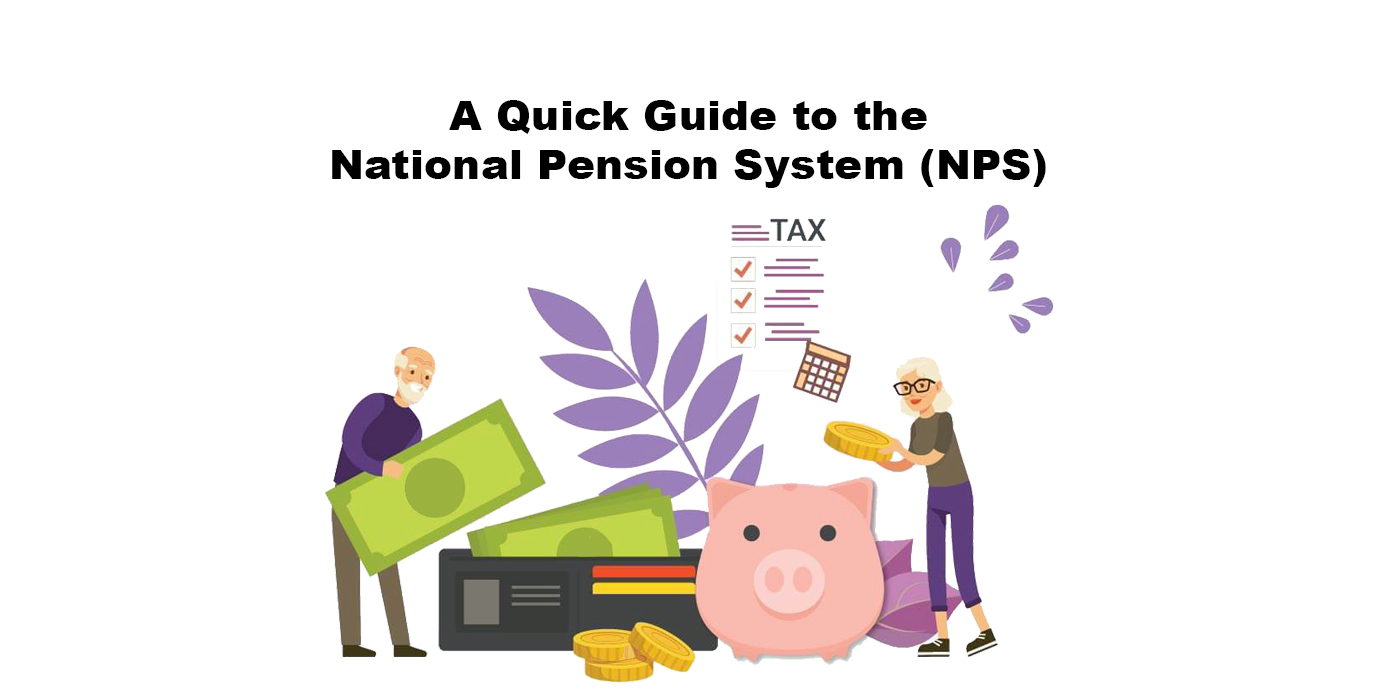What is National Pension System – NPS?
The National Pension System (NPS), launched by the Government of India for its citizens brings an attractive long-term savings avenue to facilitate effectively plan for retirement through safe and reasonable market-based returns. NPS is regulated and administered by the Pension Fund Regulatory and Development Authority (PFRDA), which is a regulatory body established by the Indian Government. This was launched in 2004 and is available to both Indian citizens and non-resident Indians (NRIs) between the ages of 18 and 60.
This scheme encourages people to invest in a pension account at regular intervals during the course of their employment or self-employment. After retirement, the subscribers can take out a certain percentage of the corpus. As an NPS account holder, the subscriber will receive the remaining amount as a monthly pension post their retirement. The NPS is useful for employees, employers, and also for the self-employed personnels.
The Useful NPS Models to Choose from:
- “All Citizen Model” for Indian citizens where it is self-contribution by the subscriber.
- “Corporate Model” for corporate employees where the contribution is by the employer and the employee.
How To Start an NPS Investment?
- To open an NPS account, the individual or the corporate, as the case may be, will have to approach Points of Presence (POPs) like banks, financial institutions, or online platforms that are authorized by PFRDA.
- Then an NPS application form would be required to be filled and the necessary Know Your Customer (KYC) documents be submitted.
- On successful registration, the individual account holder will be allotted a 12-digit Permanent Retirement Account Number (PRAN). PRAN is a critical component of the National Pension System, serving as a unique identification number that allows individuals to manage their NPS accounts, make contributions, make withdrawals and track their retirement savings.
- Under Corporate Model, the employer gets a Unique Entity Code and the employer need to link the PRAN of its employees to this Entity Code.
The Two Types of NPS Accounts:
Tier I – This account is used for retirement savings. It is mandatory to open Tier I NPS account if one wishes to join NPS. Withdrawal from this account is restricted and conditional.
Tier II – This account can be used for emergency needs. Tier II NPS Account is optional and can be opened either at the time of Tier I NPS Account opening or later. Tier II offers greater flexibility in terms of withdrawal; unlike Tier I account.
Investment Options:
In NPS, there are multiple Pension Fund Manager (PFM), Investment options (Auto or Active) and 4 Asset Classes i.e., Equity, Corporate debt, Government Bonds and Alternative Investment Funds. The Subscriber first has to select the PFM, and then the subscriber has an option to select any one of the Investment Options.
Contribution Eligibility:
- Employer Contribution:
Employer can contribute up to 10% of basic salary of the employee.
- Employee Contribution:
Employee may make self-contribution of up to 10% of basic salary to his NPS account. However, it is totally optional for an employee to decide. Employee can also make additional contribution of Rs.50,000 u/s 80CCD(1B).
- Contribution by Other (non-salaried person):
Any person other than salaried person can make contribution up to 20% of his Gross Total Income and also can make additional contribution of Rs.50,000 u/s 80CCD(1B).
What are the Tax Benefits of NPS?
- Tax benefits on employer contribution:
Eligible for a deduction of up to 10% of salary (Basic + DA) contributed by the employer under Section 80 CCD(2). This deduction is beyond the limit of Rs.1.50 lakh provided by Section 80CCE subject to the cap of Rs.7.50 lakhs on the Employer Contribution towards Specified Funds, excess contribution to Specified Funds, is taxable as a perquisite u/s 17(2)(vii) in the hands of the employee.
- Tax benefit for self-contribution:
Employee or any non-salaried person who contributes to NPS are eligible for the following tax benefits on their contributions:- Deduction of up to 10% of Salary (Basic + DA) for employee and up to 20% of the Gross Total Income for non-salaried person under Section 80 CCD(1), subject to a maximum of Rs.1.50 lakh under Section 80CCE
- Deduction of up to Rs.50,000 for additional contribution made under Section 80 CCD(1B) in addition to the overall limit of Rs.1.50 lakh under Section 80CCE
Understanding the Withdrawals:
In the case of NPS Tier I Accounts, partial withdrawals are allowed under specific circumstances, such as medical emergencies, higher education, or home purchase. However, one must meet certain conditions to withdraw funds from his Tier I Account. NPS Tier II Account offers greater flexibility in terms of withdrawal. On reaching the age of 60, one can withdraw a portion of the corpus as a lump sum (maximum up to 60%), and the rest is used to purchase an annuity to provide a regular pension income.
What is Annuity Purchase?
Upon retirement or turning 60, the NPS account holder is required to use at least 40% of his accumulated NPS corpus to purchase an annuity, which will provide him with a regular pension income. One can choose from various annuity options offered by empaneled insurance companies.
The National Pension System is designed to provide financial security during retirement and is known for its low-cost structure and flexibility. It’s essential to understand the terms and conditions, investment options, and taxation aspects before opening an NPS account. It’s advisable to consult a financial advisor or tax consultant to make informed decisions based on one’s financial goals and risk tolerance.





